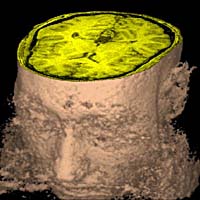Goin' for Brooks

 John Brooks lives two lives. In one life, he is a student at the University of Oregon; he is a political science major; he has a 4.1 GPA; he has a girlfriend whom he plans to marry, all of which, in some way, is linked to his dream of attending law school.
John Brooks lives two lives. In one life, he is a student at the University of Oregon; he is a political science major; he has a 4.1 GPA; he has a girlfriend whom he plans to marry, all of which, in some way, is linked to his dream of attending law school.In his other life, however, he is a gambler, a carton-a-week smoker, a stoner, and a bottomless pit that swallows his father’s money faster than a fish swallows water.
Age 21, Brooks stands at a fork in the road. So far both lives have been able to coexist with little discord. Nonetheless, he knows he cannot serve two masters. He knows the time has come to make a choice, to choose one path, one life.
"I cant do this forever," says Brooks as he sits chain-smoking at a video poker machine in a local bar. "Soon my dad is going to cut me off."
Standing over six feet, with a neck like a linebacker and a body as thin as a rope, Brooks looks worried. His father has been giving him money whenever he asks for it, and Brooks has been asking for a lot of money lately. His father will usually give him anywhere between and up to $500 to $1000 a week for food and other necessary expenditures. Brooks considers his necessary expenditures to be weed, cigarettes and a seat at a poker table in the La Center-area gambling den.
"I feel really bad about doing this to my dad," says Brooks. "Two weekends ago, I lost $800, and he payed it off for me. But he said it was the last time he was going to do it."
Brooks says his dad places a lot of hope on him. His father sees him as having the most potential out of all of his siblings and will do whatever it takes to make Brooks successful.
So far Brooks grades have been impeccable, and his father has been relatively content. Nevertheless, he says he has a feeling that soon his father won’t be there for him to stand on.
"Sometimes people ask me why I do it, why I gamble," Brooks says.
Brooks says he is neither gambling for fun nor is he gambling to make ends meet. He says he is gambling because it is in his blood. He has dice and cards floating around in his hemoglobin. He got the gambling genotype from his grandparents.
"They’re gamblers, so they just passed in onto me," he says.
Whenever Brooks visited his grandparents, they would play poker for fun, never for money though. Nevertheless, Brooks says he got his first taste of gambling from them, and ever since, he has loved everything about it, except losing of course.
Lately Brooks has been "losing" almost everything he owns. Last week he "lost" his computer, lost being a loose term meaning anything that was hawked or turned over to compensate a gambling debt. The week before last week he "lost" his I-pod. In addition to losing his most valuable possessions, he lost all his money last time he was at La Center: almost $2,000. One would think that someone who gambles the way Brooks does would not do well in college, let alone be able to function in law school.
"It will all change when I go to law school, unless I become a professional poker player that is," Brooks says.
Brooks fantasizes about being on the travel channel playing with the heavyweights. He says professional poker players have a lot of money.
"When you become a professional poker player, you have millions to blow," he says. "Ill have as many I-pods and computers as I want. Its no big deal."
Even though Brooks has his eyes set on law school, there is another part of him that is seriously considering a career as a poker player. He’s taking classes on game theory, studying such theorists as John Nash, John von Nuemann and Oscar Morgenstern.
"If you understand the odds and how people think in game situations, you have an advantage," Brooks says.
Since Brooks has been taking his game-theory class, he says he has been winning more often than losing. On a couple occasions, he’s gone into La Center with $100 and left with roughly $1,000. It is on those occasions that Brooks feels a little frisson of pleasure; it’s on those occasions that Brooks says he "feels truly alive."
Game theory does not help him with everything. Brooks is trying to work on his self-control. He has difficulty in limiting his gambling money.
"Without self-control, game theory is no big help," Brooks says. "I’m working on knowing when to call it quits."
Brooks knows he needs to stop smoking both tobacco and marijuana, and that he needs to stop gambling with his father's money. Nonetheless, the path of vice is a hard one to get off of when one has already started walking it.
"I think I need a break from school," Brooks says. "I just need a vacation to clear my head and get focused again. I’ve been going to college non-stop for the last three years. I need a break."





